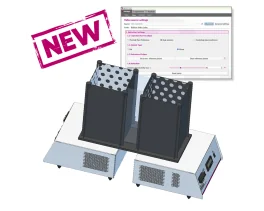Authors
N. Crouzin, M.-C. de Jesus Ferreira, C. Cohen-Solal, C. m'kadmi, N. Bernad et al
Lab
UMR 5247–CNRS–Université Montpellier 1–Université Montpellier 2, Institut des Biomolécules Max Mousseron, Montpellier, France.
Journal
Free Radical Biology and Medicine
Abstract
_-Tocopherol (_-TOH), a dietary component of vitamin E, is well known for its antioxidant capacity. Nevertheless, recent studies have pointed out non-anti-radical properties including cellular and genomic actions. Decreased levels of _-tocopherol in the brain are associated with neuronal dysfunctions ranging from mood disorders to neurodegeneration. All these behavioral effects of _-tocopherol deficiency probably do not rely simply on its anti-radical properties, but could also be reminiscent of a not-yet characterized neuromodulatory action. We have thus measured the direct actions of _-tocopherol and of its natural phosphate derivative, _-tocopheryl phosphate (_-TP), on synaptic transmission in rodent hippocampus. These compounds had opposite actions on both glutamatergic and GABAergic transmission: whereas _-TOH potentiated these transmissions, _-TP inhibited them. Interestingly, these effects were both mediated by cannabinoid receptors (CB1Rs), because they were blocked by the CB1R antagonist AM251. Although _-tocopherol and _-tocopheryl phosphate did not directly bind CB1R, both _-TP and CB1R agonists inhibited forskolin-evoked Erk1/2 phosphorylation in a nonadditive manner. Furthermore, both _-tocopherol and _-tocopheryl phosphate attenuated depolarization-induced suppression of excitation and CB1R agonist-mediated hypothermia. Therefore, we identify _-tocopherol as new lipid modulator of the cannabinoid system in the rodent hippocampus, i.e., a novel non-anti-radical action of vitamin E, which may have some preeminent impact in neuronal disorders associated with vitamin E deficiency.
Source :
http://www.sciencedirect.com/science/article/pii/S0891584911004539

 Pain - Thermal Allodynia / Hyperalgesia
Pain - Thermal Allodynia / Hyperalgesia Pain - Spontaneous Pain - Postural Deficit
Pain - Spontaneous Pain - Postural Deficit Pain - Mechanical Allodynia / Hyperalgesia
Pain - Mechanical Allodynia / Hyperalgesia Learning/Memory - Attention - Addiction
Learning/Memory - Attention - Addiction Physiology & Respiratory Research
Physiology & Respiratory Research











![Dynamic Weight Bearing 2.0 – Postural Module [Add-on]](https://bioseb.com/733-home_default/dynamic-weight-bearing-20-add-on-postural-module.jpg)
























 Pain
Pain Central Nervous System (CNS)
Central Nervous System (CNS) Neurodegeneration
Neurodegeneration Sensory system
Sensory system Motor control
Motor control Mood Disorders
Mood Disorders Other disorders
Other disorders Muscular system
Muscular system Joints
Joints Metabolism
Metabolism Cross-disciplinary subjects
Cross-disciplinary subjects CONFERENCES & MEETINGS
CONFERENCES & MEETINGS